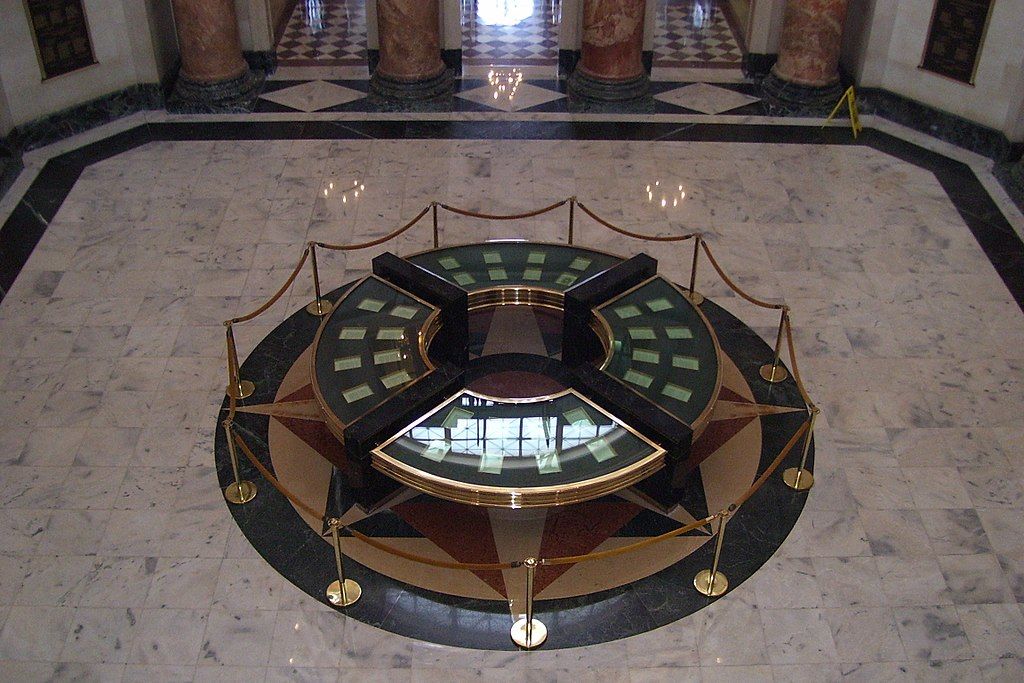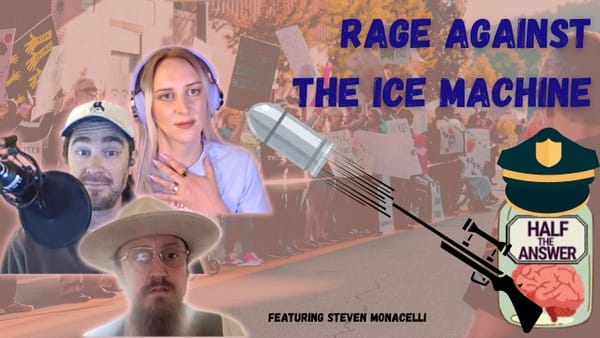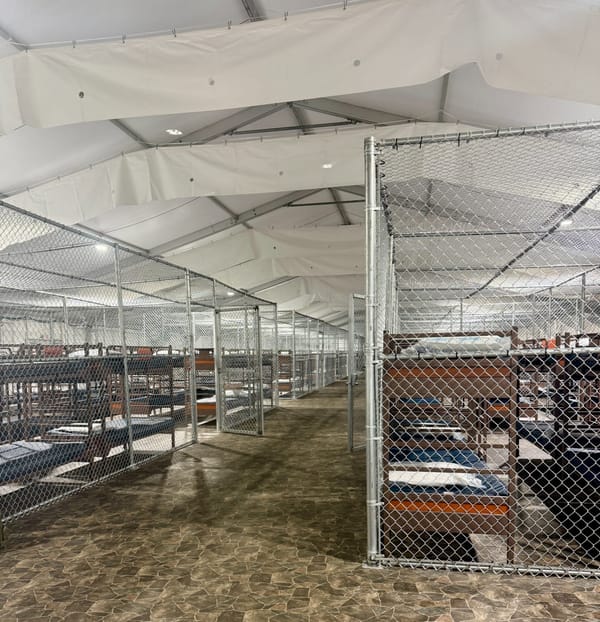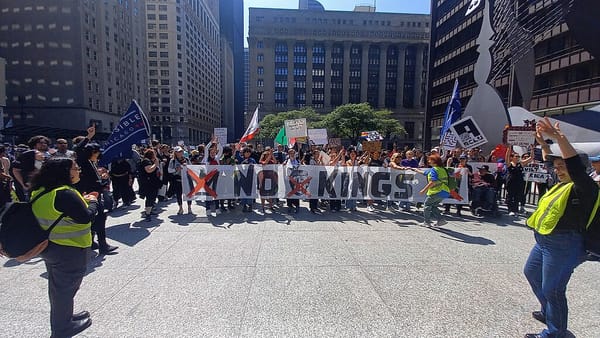Puerto Rico’s Constitution at 70: An Innovation in Self-Government

For an experiment to succeed, time and attention are required. The Constitution of Puerto Rico, which celebrated its 70th anniversary on July 25, was just that: an experiment in sovereignty crafted jointly by the Federal Government and the People of Puerto Rico. But rather than adhering to the basic scientific principle, the Federal Government has since abandoned the innovative Constitution, and in so doing, it has annulled those promises made in 1952. This article looks into how the Constitution of Puerto Rico was created, what it meant, and how in recent years, it has been demeaned as a measure of sovereignty and government by consent.
Before the Constitution
Puerto Rico became a United States Territory in 1898, as a result of the Spanish-American War. That same year, the Treaty of Paris, which ended the war, reserved for Congress the power to determine “[t]he civil rights and political status of the native inhabitants” of the new possessions.[1] Not long after, the United States moved to administer the island, passing the Foraker Act in 1900, which formed a civil government for the island.[2] Under it, the People of Puerto Rico would not decide who governed them (except for the lower legislative chamber); the Federal Government would.[3] Further, the People of Puerto Rico were left stateless in that they were not citizens of the United States, as always happened when the United States acquired territories; they were instead considered citizens of Puerto Rico.[4] And the Foraker Act also treated Puerto Rico distinctly by imposing duties on goods coming from and going to the island.[5] This last portion went directly against the Uniformity Clause of the U.S. Constitution, which holds that “all Duties, Imposts and Excises shall be uniform throughout the United States.”[6] (Long before this, Chief Justice Marshall had noted that the term “United States” embraced both States and Territories.[7])
After the enactment of the Foraker Act, a New York merchant sued the Federal Government on those grounds after incurring north of $600 in tariffs on his orange trade.[8] But the question in Downes v. Bidwell went beyond the precinct of tax law; the Supreme Court’s decision would authorize an American Empire, of which Congress was the masthead and in relation to which Congress placed itself above the Constitution. In the many opinions issued by the Court in Downes, the one that has commandeered territorial law ever since was a concurrence that found it “impossible to conceive that the treaty-making power by a mere cession can incorporate an alien people into the United States without the express or implied approval of Congress.”[9] This was a theory buttressed by the Territory Clause of the Constitution, which gives Congress the authority “to dispose of and make all needful Rules and Regulations respecting the Territory or other Property belonging to the United States.”[10] But this clause should not be interpreted as allowing Congress to operate above the Constitution with respect to these territories.[11] Three members of the Court, however, placed it just so, when it manufactured a doctrine (embraced by the Court in later decisions) of incorporated and unincorporated territories—the latter would be subject to Congress’s plenary powers but would not enjoy full protection under the U.S. Constitution.[12] Even when the United States made Puerto Ricans American citizens in 1917 through the Jones Act,[13] the Court noted that the Constitution’s application turned not on an individual’s American citizenship, but on their locality.[14] So—with few exceptions—Puerto Ricans enjoyed little popular sovereignty and government by consent of the governed until the United States entered into World War II.
A constitutional government by the people of Puerto Rico?
Progressively, the United States has extended measures of self-government to Puerto Rico. Consider the amendment to the Jones Act made in 1947, which allowed Puerto Ricans to elect their governor for the first time.[15] And in 1952, Puerto Rico’s watershed self-government moment came: After two years of constitution-making, Puerto Rico became the first non-State to adopt a constitution crafted by its people “in the nature of a compact” with the Federal Government.[16] Puerto Rico had become a democratic experiment. For example, the Puerto Rico Constitution’s Carta de Derecho (Bill of Rights) safeguarded the dignity and fundamental equality of people; enshrined the right to vote by guaranteeing “direct and secret universal suffrage and [protecting] the citizen against any coercion in the exercise of the electoral franchise”; it also secured the right to an education by mandating a free, non-sectarian educational system; it barred the death penalty; it protected organized labor movements; it protected laborers’ right to strike; it guaranteed the minority party a third of the legislative ranks if the majority party gained more than two-thirds in one or both chambers so that no political party could monopolize the amendment process.[17] Still, the Constitution of Puerto Rico went beyond that. It created an independent body tasked with the reapportionment and the district-drawing processes, overseen by the Puerto Rico Supreme Court’s Chief Justice.[18] When it came to Jeffersonian (and the more robust Jacksonian) principles of democracy, Puerto Rico’s internal government came first compared to the States.
The Puerto Rico Constitution also tinkered with federalism: “[I]t … establish[ed] a new relationship of partnership between the United States and its dependent areas without embracing either of the radical solutions of statehood within the Union on the one side …, or, on the other, the grant of a full sovereign independence.”[19] Through the compact, Puerto Rico had become a free associated state, and—at least as understood at the time—was supposed to “enjoy[] full local self-government”; the United States had “created for itself the opportunity of democratizing the spirit and structure of the government of its dependent territories.”[20] And it achieved that by stripping away some of the restrictive measures of the Foraker and Jones Acts that once anchored the island. For example, the Constitution of Puerto Rico empowered the once-feeble legislature. It also empowered the Office of the Governor by making the governor the “main driving force behind most legislation.”[21] It likewise tasked the central government with many duties the Federal Government often delegates to (or does not take from) the States. The central government, for example, made it its own prerogative to provide an education, not a municipality’s. This was not your grandfather’s federalism. But perhaps you’re wondering: just what is this constitutional arrangement?
Recall that under Downes-era decisions, Puerto Rico was considered an unincorporated territory, bereft of the Constitution’s full protections. Not only that, but Congress had unilateral power—except for appointments made by the President with Congressional consent—to administer the island, acting as both jury and executioner. Perhaps the Constitution of Puerto Rico altered the Foucauldian dynamic between the Federal Government and the newly formed Commonwealth of Puerto Rico by including the principle of consent in the charter initiating the constitution-making process.[22] But maybe it didn’t, and that was the main problem with Puerto Rico’s Constitution since its inception. Chiefly, did Congress retain those plenary powers and through them repeal the Act of 1950 unilaterally?[23] These concerns were doubtless compounded by some differences between the Commonwealth and States. For example, Puerto Ricans would get no representation in Congress, having just a Resident Commissioner in the House who’s barred from introducing measures or from voting (unless the outcome is a given). On top of that, though having ample measures of internal democracy, Puerto Rican voters would not be granted the ability to cast a vote for the President. A universal postulate is that life turns on a dime—the Constitution of Puerto Rico was no exception.
Take two individuals, Luis Sánchez Valle and Jaime Gómez Vázquez, selling a gun (on separate occasions) to an undercover police officer in Puerto Rico.[24] Puerto Rico’s prosecutors indicted them for, among other things, selling guns without a permit.[25] While they awaited the outcome of the Commonwealth charges, a federal grand jury indicted them for the same sales under U.S. gun trafficking laws.[26] They both pleaded guilty to the federal charges.[27] They then moved to challenge the Commonwealth charges based on the Double Jeopardy Clause.[28] After gaining a favorable ruling from the Supreme Court of Puerto Rico, the U.S. Supreme Court took up the case.[29]
For the Court, the question turned not on whether a “government possesses the usual attributes, or acts in the common manner, of a sovereign entity,” but on whether separate sovereigns “draw their authority to punish the offender from distinct sources of power.”[30] The Court found that based on the “ultimate source” of power, Puerto Rico and Congress were the same—for double jeopardy purposes, they could not bring successive prosecutions for the same offense. Because “Congress conferred the authority to create the Puerto Rico Constitution, which in turn confers the authority [to Puerto Rico] to bring criminal charges,” Puerto Rico and the Federal Government could not both prosecute Sánchez Valle and Gómez Vázquez.[31] And with this decision, Puerto Rico became subsumed under the Federal Government’s power once again.
This ruling is fundamentally flawed both as a practical and historical matter. The Court, for example, observed that the States “rely on authority originally belonging to them before admission to the Union and preserved to them by the Tenth Amendment.”[32] And doubtless, this is so; but if the Court’s inquiry into the dual-sovereignty doctrine is indeed historical,[33] then under it, thirty-seven of the fifty States would still be attached to the unbreakable chain between them and Congress. In other words, if the Court were to “look[] at the deepest wellsprings, not the current exercise, of prosecutorial authority” of the thirty-seven States proceeding the original thirteen, there too it would find Congress—like Puerto Rico, they too derived their prosecutorial powers from it.[34] But of course, this conflict is in many ways preempted by the equal footing doctrine, which holds that when a new State joins the Union, it is entitled to the same standing–the same privileges and rights–as those preceding it.[35] And this is conceded, even if it undermines the Court’s strictly historical test. From this, it’s easy to conclude that the sole way through which Puerto Rico can gain equality–and through which Puerto Ricans can gain equal measures of sovereignty–is through statehood. But this supposes that Puerto Rico’s situation is just like that of any other former territory’s, particularly as–and here’s the quiet part only the Insular Cases said aloud–it is an island populated by American citizens who are not of the same ethnicity and culture as most mainland counterparts. So to say that the Federal Government will miraculously change course after a hundred-plus years of the same indifference (and at some points hostility) is more than wishful thinking. But here’s perhaps where the rotten-to-the-core Insular Cases provide some hope: All throughout them, the Court agreed that the Territory Clause conferred awesome powers on Congress, and Puerto Rico is subject to them. Under that theory, then-counsel at Interior Felix Frankfurter noted that Congress could engage in “inventive statesmanship” with the new, unincorporated Territories.[36] Congress could remedy this dearth of autonomy and popular sovereignty, but it has refused to do so. Puerto Rico has not left the democratic abyss not because its people–again, all American citizens who lack basic political power in representative government–have failed it; Congress has.
And Congress failed the island again the same day the Sanchéz Valle decision was handed down when it installed a fiscal board managing the island’s finances and thus barring the island’s legislature from truly holding the power of the purse.[37] Harkening back to the undemocratic Foraker and Jones Acts, the members on this board are unelected, and the way they are appointed is murky. Let’s not forget the obvious: The members tasked with appointing or selecting the members of the Financial Oversight and Management Board are themselves unelected by the American citizens of Puerto Rico. Of the seven-member board, all are appointed by the President. Six of the members come from a list provided by Congress (two are selected by the Speaker, two by the Senate Majority Leader, one by the House Minority Leader, and one by the Senate Minority Leader). The Governor of Puerto Rico may participate in the board, but he has no vote. If this is not repugnant enough to the principles of representative government, perhaps the powers of the board are: The board casts the dispositive vote over what finances are approved, regardless of the extent of support for the measures tied to those finances. For example, Puerto Rico’s legislature may have passed a budget with overwhelming support from the parties, but if the board so chooses, it can reject it. On top of that, the Governor must present the board with expenditure reports every three months. And more boldly, it could revise active laws and make decisions over the popular will. The board, as its Chairman David Skeel put it, was meant to be a “temporary” measure, but after six years, the board still directs the island’s financial prerogatives,most notably among them some healthcare and public employee leave laws.
Promises made long ago are not promises to be broken. The value of popular sovereignty in our Republic is unparalleled. It means that the people, not the government, get to decide. Like Madison put it: “[R]epublican liberty” requires “not only that all power should be derived from the people, but that those entrusted with it should be kept in dependence on the people.”[38] The Puerto Rico Constitution was a step in that direction but, as it celebrates its 70th, rather than gaining strength as it is more and more engaged in that form of experimental self-government, it has deteriorated with age because of external forces–it has been deteriorated by Congress and the other unelected branches. The ball thus lies in Congress’s court: It has refused time and again to pass legislation aimed at untangling the situation it has made for Puerto Rico; at upholding its side of the compact with Puerto Rico. Congress has abandoned its responsibilities.
But Puerto Ricans in the island, unfortunately, have no voting power in federal elections, and so it’s hard to exert any political pressure. So there’s the other missing piece of the sovereignty puzzle. Here too, Congress needs to act. Recall the Felix Frankfurter memo calling for “inventive statesmanship.” This, coupled with the powers bestowed on Congress by the Territory Clause (and the Court), Congress is able to provide for representation for Puerto Rico. Or, at the very least, provide voting rights in the general elections. But of course, that’s the key to the game, isn’t it? If there are no voters capable of holding elected representatives accountable, then there’s no need to address their interests. So again, we reach a dead-end. It’s time the Federal Government meets its end of the bargain and that it honors that compact by increasing autonomy and democratic ideals on the island, and an easy start is to provide meaningful representation in Congress. It is by no means bound by the practice that States only are the ones to get a seat at the table. Under the powers of the Territory Clause, Congress can engage in “inventive statesmanship,” and that includes the ability to increase representative government for American citizens (it seems almost a given). On the flip side, the Federal Government could also abolish the Financial Oversight and Management Board, which casts its sprawling shadow over the island and its people. If the Federal Government’s true goal is to remedy Puerto Rico’s precarious financial situation, then it could work together with the island to address the issues rather than make its people comport with the financial omnipotence bestowed on the board–devolve some power back to the island’s legislature.
The problems Puerto Rico faces, which are also shared by the other American Territories, holds up a mirror to who we are and what we stand for. In 1776, Thomas Jefferson jotted down those now-familiar words in the Declaration of Independence: “Governments are instituted among Men, deriving their just powers from the consent of the governed.” The United States, though it boasts being the bastion of democracy–and in many ways, it has been–has left its own stranded and in so doing, it has abrogated the primordial values of self-government. Its practices in Puerto Rico have torn right through the fabric of the ideals this Republic was founded on; it has torn through the fabric Susan B. Anthony extended so assiduously and courageously; it has torn through the fabric John Lewis resew with his blood and broken skull on the Edmund Pettus Bridge. To fulfill the highest ideals of self-government, which the United States has aspired to throughout its quest to form “a more perfect Union,” principles of both national representation and democratic governance must be upheld everywhere–that includes Puerto Rico. And this requires going to the negotiating table with those most affected by this rudimentarily undemocratic regime.
[1] Treaty of Paris, Art. 9, Dec. 10, 1898, 30 Stat. 1759.
[2] Organic Act of 1900, ch. 191, 31 Stat. 77 (Foraker Act).
[3] See ibid., §§17-35, 31 Stat. 81-85.
[4] See, e.g., Louisiana Purchase Treaty, Art. 3, April 30, 1803, 2 Stat. 202 (stating that “[t]he inhabitants of the ceded territory shall be incorporated in the Union of the United States and admitted as soon as possible according to the principles of the federal Constitution to the enjoyment of all these rights, advantages and immunities of citizens of the United States”); Adams-Onis Treaty, Art. 6, February 22, 1819, 8 Stat. 252 (stating that “[t]he inhabitants of the territories which His Catholic Majesty cedes … shall be incorporated in the Union of the United States as soon as may be consistent with the principles of the Federal Constitution, and admitted to the enjoyment of all the privileges, rights, and immunities of the citizens of the United States”); Treaty of Guadalupe Hidalgo, Art. 8, Feb. 2, 1848, 9 Stat. 922 (stating that Mexican citizens who wished to remain in the now-U. S. Territories would be granted “the title and rights … of citizens of the United States”);
[5] §3, 31 Stat. 77-78.
[6] Art. I, §8, cl. 1.
[7] Loughborough v. Blake, 18 U.S. 317, 319 (1820) (“Does [the United States] designate the whole, or any particular portion of the American empire? Certainly this question can admit of but one answer. It is the name given to our great republic, which is composed of States and territories”).
[8] Bartholomew H. Sparrow, The Insular Cases and the Emergence of American Empire (Lawrence: Kansas University Press, 2006), 80.
[9] 182 U.S. 244 (1901) (White, J., concurring). This case marked the start of a series of case law coined the Insular Cases, which concerned the new Territories.
[10] Art. IV, §3, cl. 2.
[11] Cf. Rooke’s Case, 5 Co Rep 99b, 100a; 77 ER 209, 210 (1597) (“Notwithstanding the words of the commission giv[ing] authority to the commissioners to do according to their discretion … their proceedings ought to be limited and bound with the rule of reason and law”).
[12] Downes, 182 U.S. at 342.
[13] Organic Act of Puerto Rico, ch. 145, 39 Stat. 953.
[14] Balzac v. Porto Rico, 258 U.S. 298, 309 (1922) (“It is locality that is determinative of the application of the Constitution, in such matters as judicial procedure, and not the status of the people who live in it”), but see, Johnson v. Eisentrager, 339 U.S. 763, 769 (1950) (“Citizenship as a head of jurisdiction and a ground of protection was old when Paul invoked it in his appeal to Caesar”).
[15] Act of August 5, 1947, ch. 490, §1, 61 Stat. 770.
[16] See Act of July 3, 1950, §1, 64 Stat. 319 (approving the constitution-making process); Act of July 3, 1952, 66 Stat. 327-328 (approving the Constitution of Puerto Rico).
[17] P.R. Const., art. II, §§1, 2, 5, 7, 17, 18; art. III, §§2, 7.
[18] Ibid., art. III, §4.
[19] Gordon K. Lewis, “Puerto Rico: A New Constitution in American Government,” Journal of Politics 15, no. 1 (February 1953): 42.
[20] Ibid.
[21] Lewis, “A New Constitution in American Government,”: 52.
[22] See Act of July 3, 1950, §1, 64 Stat. 319.
[23] Lewis, “A New Constitution in American Government,”: 58.
[24] Puerto Rico v. Sanchez Valle, 579 U.S. ___ (2016) (slip op., at 4).
[25] Ibid.
[26] Ibid.
[27] Ibid., 5.
[28] Ibid.
[29] Ibid.
[30] Ibid., 7 (internal quotation marks omitted).
[31] Ibid., 15-16, 18.
[32] Ibid., 8 (internal quotation marks omitted).
[33] See ibid., 1, 7, n.3, 12, 17.
[34] See ibid., 7.
[35] See Idaho v. United States, 533 U.S. 262 (2001).
[36] See Memorandum for the Secretary of War, in Hearings on S. 4604 before the Senate Committee on Pacific Islands and Porto Rico, 63d Cong., 2d Sess., 22 (1914).
[37] See 48 U.S.C.A. §2121, 2142(c)(d), 2144(a)(b)(c).
[38] Federalist No. 37, p. 4 (J. & A. McLean eds. 1788) (J. Madison).
Featured Image is Exhibition of Constitution of Puerto Rico at the Capitol of Puerto Rico, by Carlo Giovannetti




